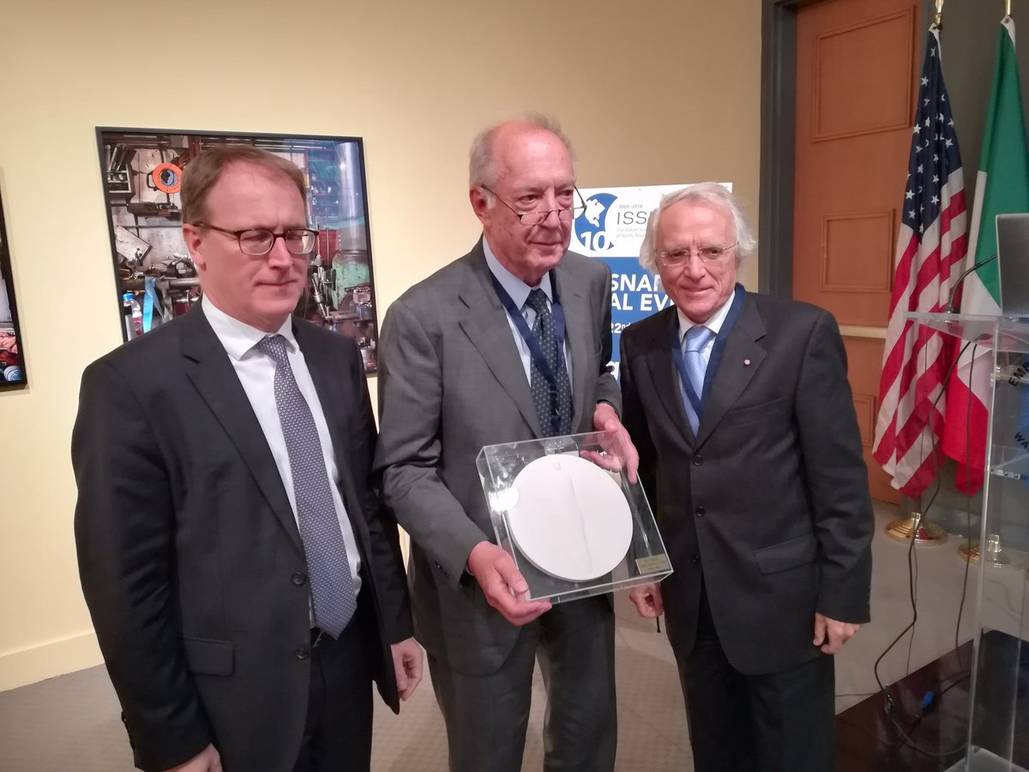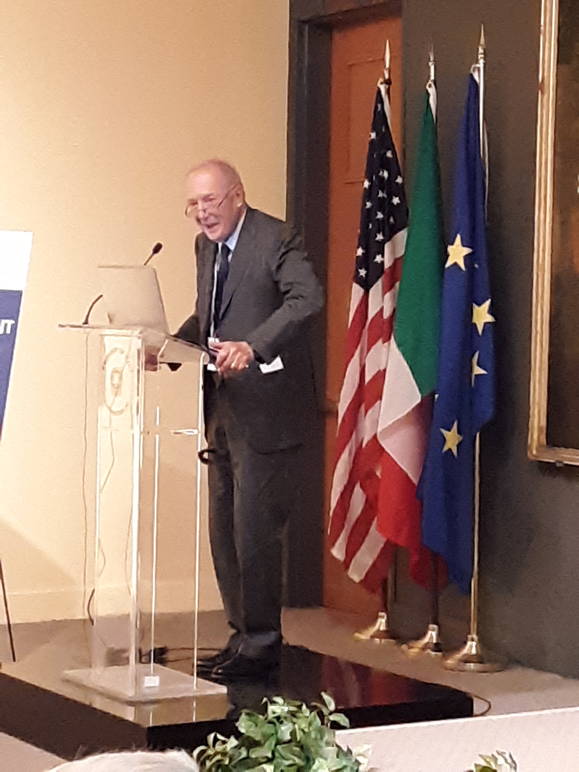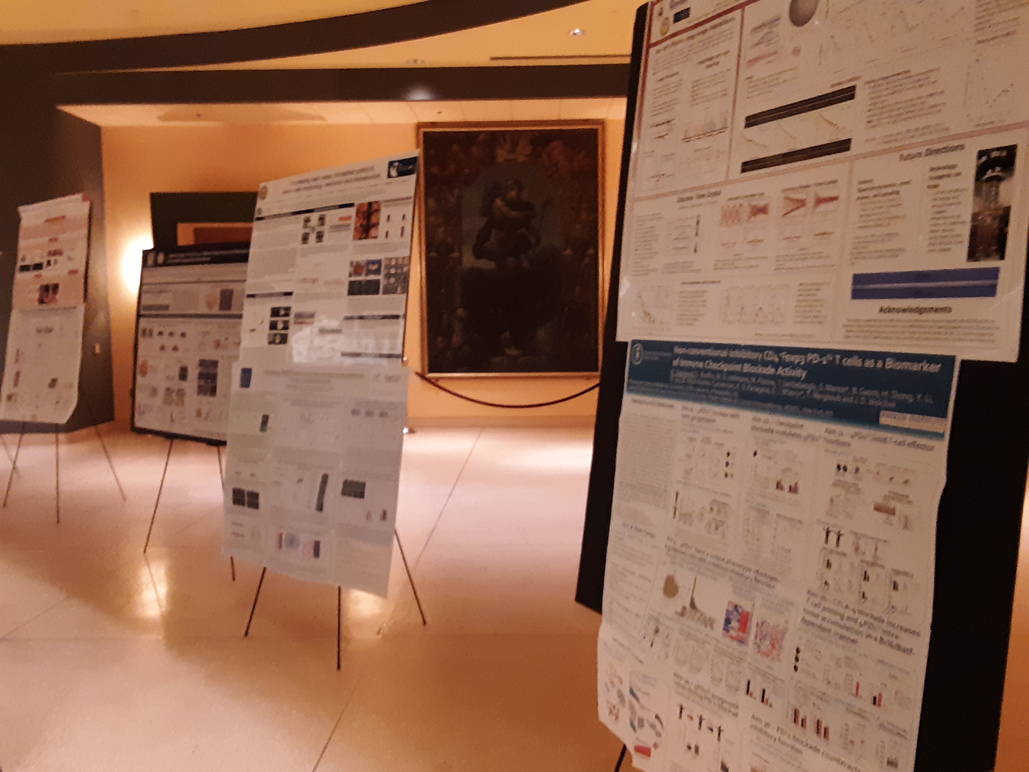ISSNAF 2018 Annual Event Highlights the Longevity of Italian Innovation and Life
In today’s globalized world, scientific innovation and research is not confined by national boundaries or language. With new technology, scientists can easily share information with the rest of the world with just the press of a button. On Monday, October 22, the Italian Scientists and Scholars of North America Foundation (ISSNAF), hosted by the Embassy of Italy, led revealing discussions on the future of longevity for human life. That evening, ISSNAF honored an Italian who has influenced the field of neuroscience across the Atlantic with the 2018 Life Achievement Award, Emilio Bizzi, Emeritus Investigator at the McGovern Institute and Emeritus Institute Professor at MIT.
From Galileo Galilei’s legendary experiments with falling objects at the Leaning Towers of Pisa to Guglielmo Marconi’s co-invention of the radio antenna, Italy has contributed knowledge, creativity, and ingenuity to scientific study. While the Embassy of Italy often showcases, in partnership with the Italian Cultural Institute, excellence in Italian art, music, and film, the ISSNAF Annual Event was a platform for esteemed Italian researchers in the scientific community to share their work.
“Their prestigious successes and the contributions they generate in the world are testimonies to the high level of our educational system. Italian students are a credit and an asset to our country. They represent in an excellent way to the world the spirit of our peninsula,” the Italian Minister of Education Marco Bussetti penned in a letter to attendees of the ISSNAF Annual Event.
Italian scientists who are building quantum computers, scholars who have discovered the origin of mysterious cosmic subatomic particles, and outstanding individuals who are experimenting with treatments to cure cancer and leukemia filled the Embassy auditorium, and were recognized by ISSNAF for their contributions that help us live longer, better lives.
A panel chaired by journalist and author Maria Teresa Cometto offered an opportunity to discuss the role of technology in the longevity of human life. The discussion included experts like Alessandro Bartolomucci, Associate Professor of Physiology at the University of Minnesota, Fabrizio Renzi, Director of Research Initiatives at IBM Italia, and Sarah Holland, the Public Policy Manager of Google.
The recipient of the 2018 Life Achievement Award, Emilio Bizzi, touched upon the explosion of new technology and what that means for new discoveries in neuroscience in his acceptance speech.
After introductions from Massimo Piatelli-Palmarini, Vice President of ISSNAF, and Alberto di Mauro, ISSNAF Representative for Italy, Emilio Bizzi made his way to the front of the room to accept the elegant 2018 Life Achievement Award. Designed by artist Oliviero Rainaldi, the glass square with a bright white circular center holds an ambiguous human figure resembling Da Vinci’s Vitruvian Man. The result is the “essence of the scientific proportion of the human body,” said di Mauro.
Bizzi began his speech in Italian, touching upon the growing need for mentorship in recent years. He addressed the large number of young people interested in neuroscience because of the many ways technology has improved analyzing behavior. With brain imaging techniques, we can delve into the brain’s secrets.
“The complexity of the current integration of various technologies,” Bizzi continued in English, “is a daunting phenomenon” and a "big problem,” as students need to figure out where they fit in the grand scheme of things.
“What is needed now for people from a culture like the one in Italy is mentoring, and a little reorientation. I am glad to see that ISSNAF has a [mentoring] program. An engineer is very well trained in engineering” in Italy. But, according to Bizzi, the engineer has no contact with other areas of research and their professionals.
“There are engineers who want to study the brain, it is a big problem to solve. We need to match the personality of the students with the kind of research they should do.”
Born in Rome in 1933, Bizzi himself originally studied medicine at the University of Pisa before deciding that the brain was his area of interest. Yet he wondered if he would ever “make a dent” in neuroscience. Bizzi then joined the Massachusetts Institute of Technology (MIT) faculty in 1968. He served as director of the Whitaker College of Health Sciences and Technology from 1983, and became chair of the MIT Department of Brain and Cognitive Sciences for over a decade. In 2001, he was appointed Investigator at the McGovern Institute.
During this time, he did make a dent in neuroscience. By examining how the brain translates our general intentions into detailed commands, he discovered that groups of muscles are activated synergistically by circuits of neurons in the spinal cord. Bizzi believes that these synergies represent the fundamental building blocks for assembling a repertoire of complex movements.
Despite his many honors, including the President of Italy’s Gold Medal for Scientific Contributions in 2005 and his service as President of the American Academy of Arts and Sciences from 2006 to 2010, Bizzi believes that we have only “nibbled at the edges” of neuroscience. But with a new “powerful convergence of techniques” from fields like engineering and genetics, neuroscience can “move forward in a deep way.”
“With the addition of all these technologies, there is a sophistication of thinking about the brain, which is important for new experiments. Let’s not forget the purpose of neuroscience, which is to cure diseases of the brain.”
As ISSNAF celebrates its tenth anniversary with over 4,000 members, Dr. Emilio Bizzi is an invaluable role model for the many Italians who decide to carry out research in North America. His work has strengthened the ties between the two sides of the Atlantic in the field of science, and highlights the longevity of the role Italians have played in scientific innovation.
ISSNAF is a 501©(3) not-for-profit organization, whose mission is to promote scientific, academic, and technological cooperation among Italian researchers and scholars active in North America, and research institutions and industry in Italy.
ISSNAF is grateful to its membership for their active participation, and to its volunteers, sponsors, and donors for their essential and generous support. It’s only with their contribution that ISSNAF can fulfil and grow its mission.
To join ISSNAF as an affiliate, become a volunteer or donate, please visit www.issnaf.org.
For additional information, please email Monica Veronesi, ISSNAF Executive Director, [email protected].





































i-Italy
Facebook
Google+
This work may not be reproduced, in whole or in part, without prior written permission.
Questo lavoro non può essere riprodotto, in tutto o in parte, senza permesso scritto.